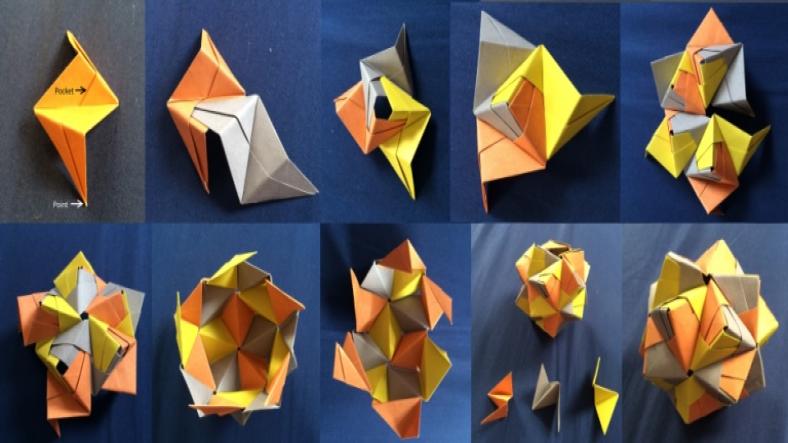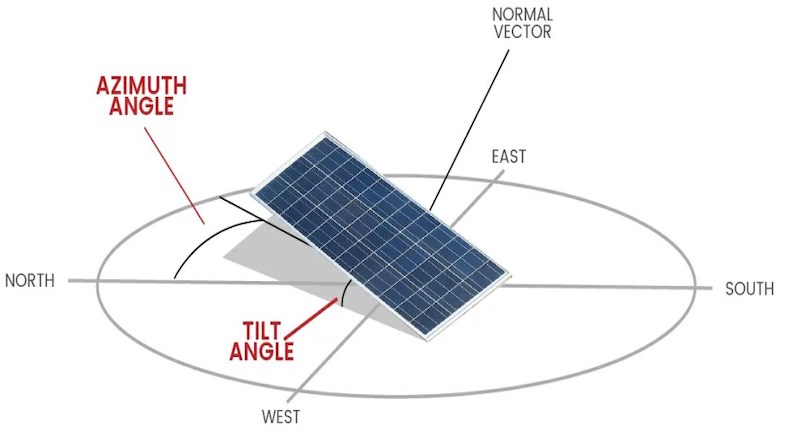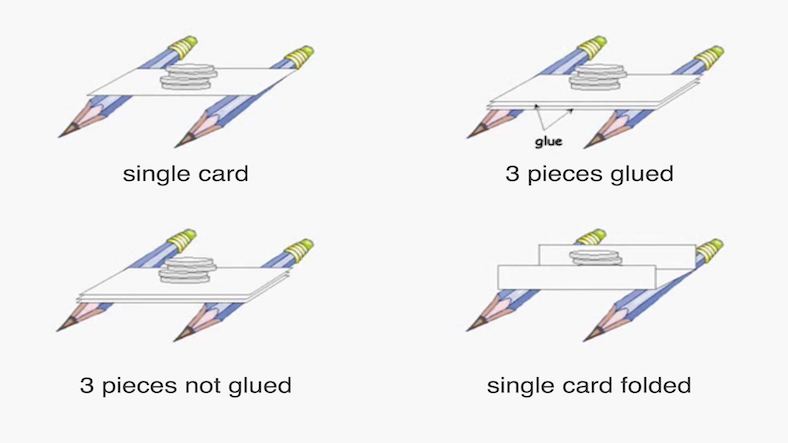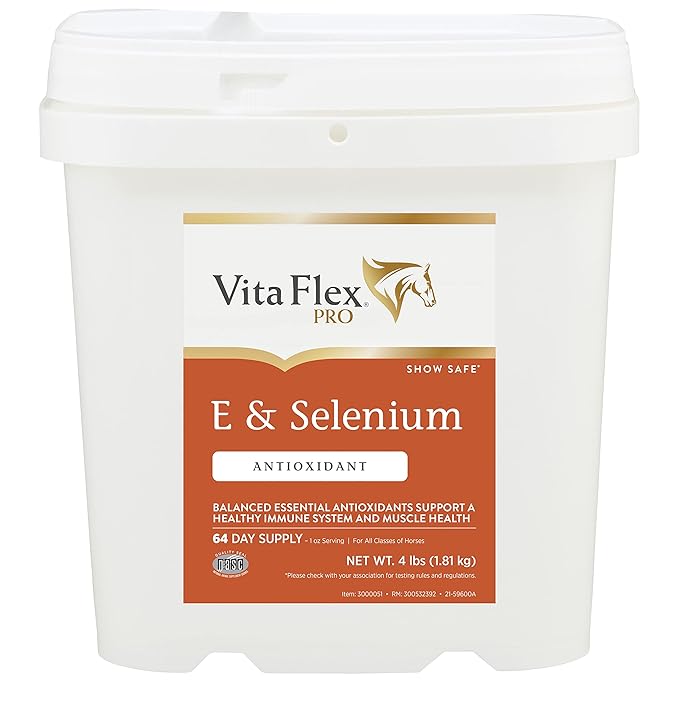Origami, the traditional Japanese art of paper folding, is more than just a creative hobby. It is also an excellent way for children to learn and understand basic geometric concepts. When children fold paper into different shapes, they can clearly observe how geometry works in real life. This hands-on activity helps them understand shapes, angles, symmetry, proportions, and spatial thinking.
This article explains a complete “Origami Geometry” science experiment designed specifically for children. It uses simple materials and easy steps to explore different shapes such as squares, triangles, rectangles, pentagons, and hexagons. The experiment is perfect for home learning, school classrooms, science fairs, or STEM activities.
Why Origami is Useful for Learning Geometry
Origami helps children understand geometry because it allows them to see geometric transformations directly. For example:
- Folding a sheet shows symmetry.
- Turning a square into a triangle shows how shapes relate to each other.
- Making precise folds helps children understand angles and measurements.
- Seeing a shape change with each fold improves spatial reasoning.
Unlike textbook diagrams, folding paper makes geometry feel more real and meaningful. Children remember concepts better when they physically create them.
Materials Needed
This experiment requires only a few basic items that are easily available.
1. Origami Paper:
Square sheets of paper in multiple colors. The standard size is 6x6 inches, but any square sheet will work.
2. Scissors:
Used only when a shape needs to be cut.
3. Ruler:
Useful for measuring lengths, understanding proportions, and ensuring accuracy.
4. Pencil:
For marking light lines or reference points before folding.
All materials are safe and suitable for children, but supervision is recommended when using scissors.
Basic Origami Shapes to Explore
The experiment focuses on introducing children to the following basic geometric shapes:
- Square
- Triangle
- Rectangle
- Pentagon
- Hexagon
Each shape teaches different properties such as number of sides, angles, symmetry, and proportions.
Science Experiment Steps
Below are detailed steps for each part of the origami geometry experiment.
1. Making a Square and Understanding Symmetry
Objective: Learn about symmetry, equal sides, and basic shape properties.
Steps:
- Begin with a square sheet of origami paper.
- Fold the paper diagonally from one corner to the opposite corner to form a triangle.
- Fold both sides of the triangle inward to meet at the center crease, creating a smaller triangle.
- Unfold the paper completely to return to the original square.
Discussion:
- Children can observe how the folds divide the square into smaller symmetrical parts.
- Ask them how many lines of symmetry a square has.
- Show how each fold creates mirror-image halves.
This step helps children understand symmetry and the concept of equal sides.
2. Creating a Triangle and Exploring Triangle Types
Objective: Identify different types of triangles and understand basic angles.
Steps:
- Start with a square paper.
- Fold it diagonally to form a triangle.
- Fold it again to create a smaller triangle.
Discussion:
- Open the paper and identify triangle shapes formed through folds.
- Explain the three main types of triangles:
- Equilateral (all sides equal)
- Isosceles (two sides equal)
- Scalene (no equal sides)
- Talk about how angles change depending on folds.
This step helps children recognize triangle variations and understand how folding changes shape properties.
3. Making a Rectangle and Understanding Proportions
Objective: Learn how rectangles form and explore dimensions and ratios.
Steps:
- Start with a square sheet.
- Fold the paper in half to create a rectangle.
- Fold it again in the opposite direction to make a smaller rectangle.
Discussion:
- Compare the original square with the resulting rectangles.
- Discuss how one pair of opposite sides is longer than the other.
- Introduce the idea of proportions and ratios.
This activity helps children understand how changing dimensions affects shape structure.
Google Ad 1
4. Creating an Origami Pentagon
Objective: Learn the properties of a pentagon and understand five-sided shapes.
Steps:
- Begin with a square sheet.
- Fold the paper in half to create a rectangle.
- Fold both sides of the rectangle inward toward the center to start forming a pentagon shape.
- For a more accurate pentagon, cut along the folded edges or adjust folds as needed.
Discussion:
- Explain that a pentagon has five sides and five angles.
- Show examples of regular and irregular pentagons.
- Ask children where pentagons appear in real life (examples: home plate in baseball, shapes in nature).
This activity introduces polygons beyond basic shapes.
5. Making an Origami Hexagon
Objective: Learn about six-sided shapes and equal angles.
Steps:
- Fold the paper into a rectangle.
- Cut off a small triangular section from one corner.
- With the remaining paper, fold equal sections on each side to create a hexagon.
Discussion:
- A hexagon has six equal sides and six equal angles in its regular form.
- Ask children where hexagons appear in real life (examples: honeycombs, tiles, nuts and bolts).
- Show how equal folds help create a regular hexagon.
This step introduces a more complex geometric shape and helps children recognize shapes in nature and design.
Scientific Concepts Explored
This experiment teaches several important mathematical and scientific concepts:
1. Symmetry:
Origami helps children understand lines of symmetry and mirror images.
2. Geometry:
Through hands-on folding, children learn properties of shapes, sides, angles, and polygons.
3. Angles and Proportions:
Folds introduce children to angle changes, equal angles, and proportional divisions.
4. Spatial Reasoning:
Children develop the ability to visualize and understand how shapes transform.
5. Measurement:
Using a ruler teaches accuracy and understanding of dimensions.
Tips for a Successful Experiment
- Encourage children to make slow, precise folds for accurate shapes.
- Allow them to try the folds multiple times; repetition improves understanding.
- Use colored paper to make different shapes easy to identify.
- Provide simple diagrams or drawings to guide children.
- Begin with basic shapes before moving to complex polygons.
Safety Considerations
- Children should use scissors only under adult supervision.
- Keep sharp tools or objects away from young children.
- Use child-safe scissors whenever possible.
- Make sure the workspace is clean and free from clutter.
Conclusion
The Origami Geometry experiment is a wonderful way to combine creativity with learning. By folding paper into different shapes and observing their properties, children gain a deeper understanding of geometry in a fun and engaging way. This activity not only strengthens mathematical concepts but also improves fine motor skills, concentration, and problem-solving abilities.
Whether you are a parent, teacher, or student, origami provides a simple yet powerful method to make geometry interesting and memorable. Children are more likely to enjoy learning when they can create something with their own hands.
Thank you for reading this article. For more science and technology-related content, explore and subscribe to PeoplesBLOG.














